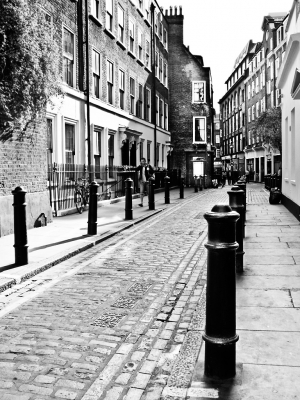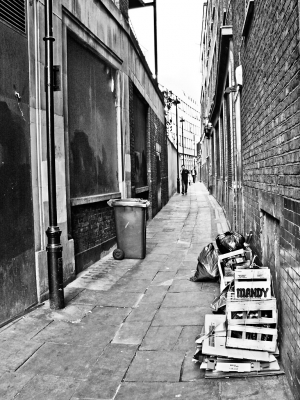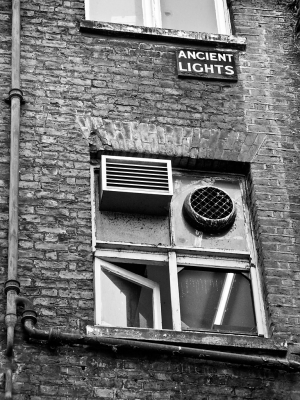A few months ago I was at a christening for a friend’s twins. I got talking to Jenny Miller, who I hadn’t seen for almost fifteen years. She asked me if I could remember the name of the Haitian restaurant in Soho that our little crowd of clubbers used to frequent during the small hours of Sunday mornings. Of course I remembered. The place was called Kent Moue, and was located on the stretch of Old Compton Street between Greek Street and Frith Street.
Next door to the restaurant was a jewellers called The Gem Union. A little further along, on the opposite side of the road, there was another jewellers with an identical name. Jamie Duggan, who had grown up just around the corner, on Frith Street, told me that both places were owned by the same family, but an argument over a daughter’s wedding had caused a rift, and both sides now “fucking hated each other with a vengeance”, and had each claimed one of the shops as their own.
None of us could remember how we discovered Kent Moue, or when exactly we first worked up the courage to venture inside. I suppose it would have been sometime around 1992, when I was a weekend visitor to a couple of club nights in the area. On Saturday evenings, we would meet up by the Eros statue on Piccadilly Circus. From there we would walk to Resilience on Leicester Street. Later, we started alternating between Resilience and a new club called Swords, which was originally staged in the old Toomey Ballroom, but eventually relocated to a former gentlemen’s outfitters called Blackledgers, just off Carnaby Street.
In the summer, we would emerge from these clubs just as the sun was coming up, often spilling out through the blacked-out fire doors of Resilience. In the winter, it would be cold and dark. Sometimes, it would be raining. One morning we exited Swords to find the streets blanketed in six inches of fresh snow. Flurries of flakes the size of pinheads whirled against a backdrop of soupy green-grey cloud which clung to the night sky like a grease stain, tinted orange in the glow of the streetlamps. In the distance we could hear shouting, and discovered that a massive snowball fight had broken out on Piccadilly Circus. We joined in and fought a good-natured running battle with gangs of homeless, a band of squaddies who were down on weekend leave from their barracks in Aldershot, foreign tourists, fellow clubbers and other metropolitan waifs and strays. The police kept a watchful presence on the sidelines, occasionally cheering a good shot to the face, and only intervening after somebody accidentally smashed one of the windows of Tower Records. After we were instructed to move on, a large group of us tramped down the road to Trafalgar Square, where the fight continued. We were still there four hours later as the rest of London began to wake up.
Kent Moue never seemed to close and consequently became a favoured haunt of ours while we waited for the Underground and the buses to start running. The interior was partly obscured by a ratty curtain consisting of unevenly cut pieces of shrivelled twine that dangled down in a row from the inside wooden frame of the plate-glass window, where they were held in place by drawing pins. Along their lengths were distributed oddly shaped wooden beads, which closer inspection revealed to be blocky human figures, crudely carved from kernels of nutmeg and branded with scorched initials. We never found out their true purpose. Naturally we all assumed they were voodoo dolls.
On one occasion we were in the middle of a meal when a gigantic, smartly dressed man we had never seen before approached our table. Without acknowledging us, he leaned across our plates towards the window, forcing Hilary to snatch a bottle of wine away to avoid it being knocked over. With one enormous thumb he fixed a fresh string of nutmeg effigies in place. A few weeks later Hilary noticed, at the bottom of a string, a new figure bearing her initials, and completely freaked out. Jenny took her outside to calm her down. When she refused to come back inside, the pair went home.
In hindsight there was always a faint air of menace lurking behind the studious indifference of the waiting staff, who could often be seen gathered together in one anonymous corner of the dining room, smoking and engaging in murmured conversation, ignoring our often boorish attempts to summon them to our table.
The bill was never written down. At the end of the meal, somebody would tell you how much you owed. The amount often felt quite arbitrary, but none of us ever argued. I recall one time round at Kyle’s flat in Shoreditch, when we were having a laugh at the expense of a waiter we had christened El-Bunko. He spoke a peculiar mangled form of English, as if he had learned the language in a game of Chinese whispers. When telling us what we owed, he would always substitute the word “shekels” for pounds. Later that evening, Jamie took me to one side and warned me that the people who ran Kent Moue were known to be “serious characters”, and that we should be on our best behaviour in there and not “take the piss”.
His words came back to me a few weeks later. I had been blasted into a low orbit by a potent combination of top-notch E that Kyle had obtained from one of his cousins in Liverpool and copious brandy shots which had seemed like a good idea when I began ordering them. Staggering back to the dining room from the toilets, I took a wrong turn and found myself standing in one of several doorways to the huge kitchen, which at the time was totally deserted. Lying on the aluminium counter, a few inches from a pair of gently simmering saucepans, was a Kalashnikov assault rifle.
The decor of Kent Moue was entrenched in the1970s: heavy starched tablecloths, tasselled fabric lampshades, and a colour scheme that was a sickly blend of cream and pale orange. The menus were folded cubes of waxed card, which we rolled back and forth across the tables like oversized dice. In the corner of the room was a tiny, quarter-circle stage. Even at 3 or 4 a.m. there would sometimes be bands playing. One morning we stumbled in to find Gallon Drunk part-way through a downbeat set that, every so often, would blaze into life before sinking back into near inertness. Their frontman, James Johnston, was barely upright, his eyes permanently closed, his entire bodyweight apparently supported by the microphone stand. They were still playing two hours later when we left.
The band we saw most often at Kent Moue was a trash glam rock group called Mink Tongue. Their lead singer was a narcissistic Spanish girl called Nuria who was as fake as they come. She briefly rose to a position of minor celebrity when she presented a series of reports on the London club scene for late-night youth TV show The Word.
When I think back to it now, with the perspective of two intervening decades, Kent Moue was an ideal buffer between the mayhem of the club and the unrelenting normality of my home life. It was a place where you could slowly come back down to earth from whatever you were on. I would sit quietly at one of the tables with my friends, as my hearing slowly returned and my sweat-soaked clothing dried out, periodically swallowing a spoonful of Madame Francis Dessert, which was a cold, set rice pudding, garnished with crescent-moon slices of fresh mango.
When the tube and the buses started running, we would all go our separate ways. I would take the Metropolitan Line back to my parents’ house in Pinner, and crawl under the duvet for a few hours while they went to church. At one o’clock my dad would make a point of standing at the bottom of the stairs and loudly calling me down for dinner. I would sit at one end of the table in our living room, next to my younger sister and my surviving grandparents, sullenly pushing the elements of my mother’s lamb roast around my plate.
Resilience and Swords both ran their course, and were superseded by other club nights and different music. I wasn’t there when they bowed out, and only read about their closure retrospectively, in One-Twenty – the dance music magazine that I continued to buy out of habit for many years, even after I had lost interest in the scene.
![]()
Last week I had a meeting with a client on Regent Street, and found myself walking along Old Compton Street in the direction of Piccadilly Circus. Kent Moue was gone. In its place was a souvenir shop whose windows were filled with London 2012 Olympic Games memorabilia. The jewellers next door was trading under a different name. The branch of The Gem Union further along the road had disappeared altogether.
I felt an acute sense of loss, bordering on grief. When I was young, it seemed like the world was set in stone. Resilience would always be there, and I would always be up for it. My dad would always be around on Sundays to call me down for dinner. But, as I get older, the scenery of my past is crumbling away. I stumble into old haunts only to be confronted with a difficult truth: there is nothing left for me to return to, I have no option other than to keep moving forward.




